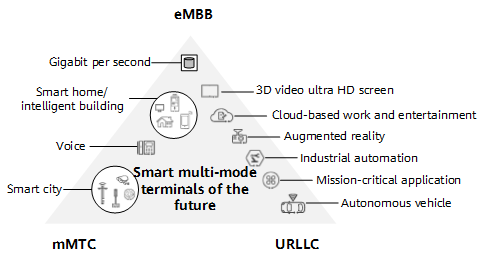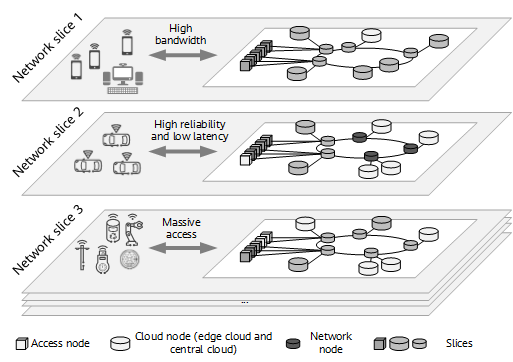Background of Network Slicing
The history of network development shows that networks such as IP backbone, metro, and mobile bearer networks have borders, which bring many difficulties to end-to-end service deployment and complicate management and maintenance. With the development of the society, the complexity of networks hinders the development of services. It has been the industry's consensus to build a unified IP bearer network that is ultra-broadband, simple, intelligent, reliable, and secure. "Everything over IP" is gradually becoming a reality.
Meeting diversified, differentiated, and complex requirements of various services on a unified IP bearer network is a new challenge. Another challenge is how carriers avoid becoming dumb pipe providers and obtain new business value.
The features of services in various vertical industries in 5th Generation (5G) differ greatly. For instance, environment monitoring, smart home, smart agriculture, and smart meter reading require a vast number of device connections and frequent transmission of masses of small packets; video backhaul and mobile healthcare services require high transmission rates; IoV, smart grid, and industrial control services require millisecond-level latency and approximately 100% reliability. Considering this, 5G must be highly flexible and scalable, adapting to huge quantities of device connections and diversified user requirements; only then can it penetrate more vertical services. What's more, while ensuring mobile broadband requirements are met, 5G must also meet requirements of different industries through building flexible and dynamic networks, with vertical requirements as the focal point.
As shown in Figure 1, the main service requirements in the 5G era are classified into three types:
- Enhanced Mobile Broadband (eMBB): focuses on bandwidth-intensive services, such as HD video, virtual reality (VR), and augmented reality (AR).
- Ultra-reliable low-latency communication (URLLC): focuses on services that are extremely sensitive to latency and reliability, such as autonomous driving, industrial control, telemedicine, and drone control.
- Massive Machine Type Communication (mMTC): covers scenarios with high connection density, such as smart city and smart agriculture. They require completely different kinds of network characteristics and performance, which cannot be provided by a single network.
To meet the differentiated requirements of various services on a physical network, network slicing is introduced as one of the key technical features of 5G. Network slicing divides a physical network into multiple virtual networks that contain specific network functions and consist of customized network topologies and network resources. This meets the service function requirements of different network slice tenants and provides SLA assurance. Figure 2 shows an example of 5G network slicing.
5G networks will provide different network slices for multiple tenants based on a set of shared network infrastructure. Customers from vertical industries use 5G networks as tenants of these slices, which therefore must be isolated. This is crucial to vertical industries from two aspects: In terms of security, data and information between tenants are effectively isolated; in terms of reliability, network exceptions or faults of one tenant are effectively prevented from affecting other tenants on the same network.
Carriers transform from a traffic-based revenue creation model to a service-based revenue creation model while providing network slicing services. Providing on-demand, customized, and differentiated services will be the main model of carriers in the future, and will also be a new value growth point of carriers.

